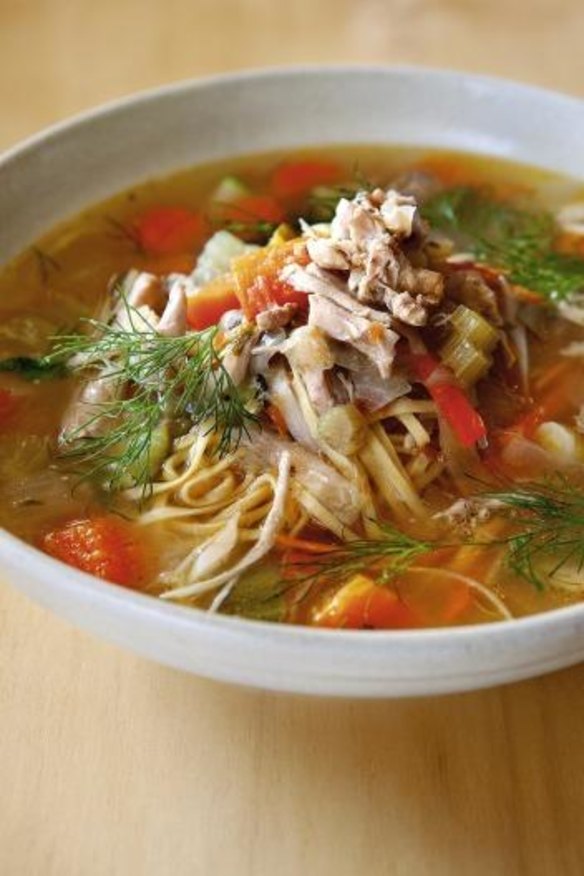Can I re-freeze chicken stock?

Can I defrost chicken stock, use some to make soup and refreeze the rest? M. Stephens
No. You're asking for food poisoning. You know the petri dishes on which bacteria is grown in labs? They're filled with protein, just like stock. So, freeze stock in small portions. Some cooks pour stock into ice-cube trays, freeze then store the "stock cubes" in plastic bags. My mate Matt the chef makes 10 litres of stock, removes the bones and veg then reduces the lot down to 500 millilitres, which he then freezes in very small containers – very concentrated and doesn't take up freezer space. Another chef mate makes stock, pours it into heavy-duty plastic bags, heat seals them, then freezes them.
Why do some food stores keep their anchovies in the fridge? A. Worland
I have a mate who hates anchovies so much that he swears if he were to rule the world he would ban them. He calls them Satan's seafood. This is why I try to sneak them into every dish - salad dressings, gravy, inserted into roast lamb with rosemary - when he comes for dinner. Anchovies are nature's stock cube. They are cured, head, guts and all, in brine so salty that salt crystals form on top. During curing the proteins in the flesh break down into amino acid, compounds that we detect as savoury deliciousness or what the Japanese call "umami". Some anchovies are semi-conserved. These means they are filleted, those fillets laid into the tin like peak-hour train passengers, covered in oil (often a blend of canola and olive oil) then sealed - but not sterilised - through heat. There is enough salt in the anchovies to stop bacteria, such as botulism, growing. The enzymes that break down the flesh, however, have not been knocked out by heat. So storing the anchovies below 4C helps keep them in perfect condition. For the record I use Always Fresh brand (50g, $3) for day-to-day cooking and Lolin anchovies (50g, $9) for special occasions.
I was reading a novel based in Massachusetts and at a meal the family ate "slump". What's slump? G. Sutton
The story goes that when the English settled the north-east of America they didn't have suet to make the dough for a steamed suet pudding, so they stewed forest berries and apples, put uncooked scone dough on top, then baked. This is referred to as a cobbler. In New England and the Canadian Maritime provinces this mix is sometimes cooked on the stove and the scone mix is added as you would with dumplings. These dishes are referred to as slumps, pandowdies or grunts, in reference to the bubbling sound. In North Carolina you can find sonkers. Another member of this family is Brown Betty, in which sweetened fruit is layered with bread, then baked. I have found reference to another version of cobbler rather unappetisingly called The Dump.
Letters
My apologies. Recently I wrote that the best way to get honey off a spoon was to heat the spoon first. Many of you wrote in saying that was a waste of energy and "the nicest way to get honey off a spoon is to lick it off". I had omitted the word "measuring" before spoon. Sorry.
Send your vexing culinary conundrums to brainfood@richardcornish.com.au or tweet to @Foodcornish
The best recipes from Australia's leading chefs straight to your inbox.
Sign up